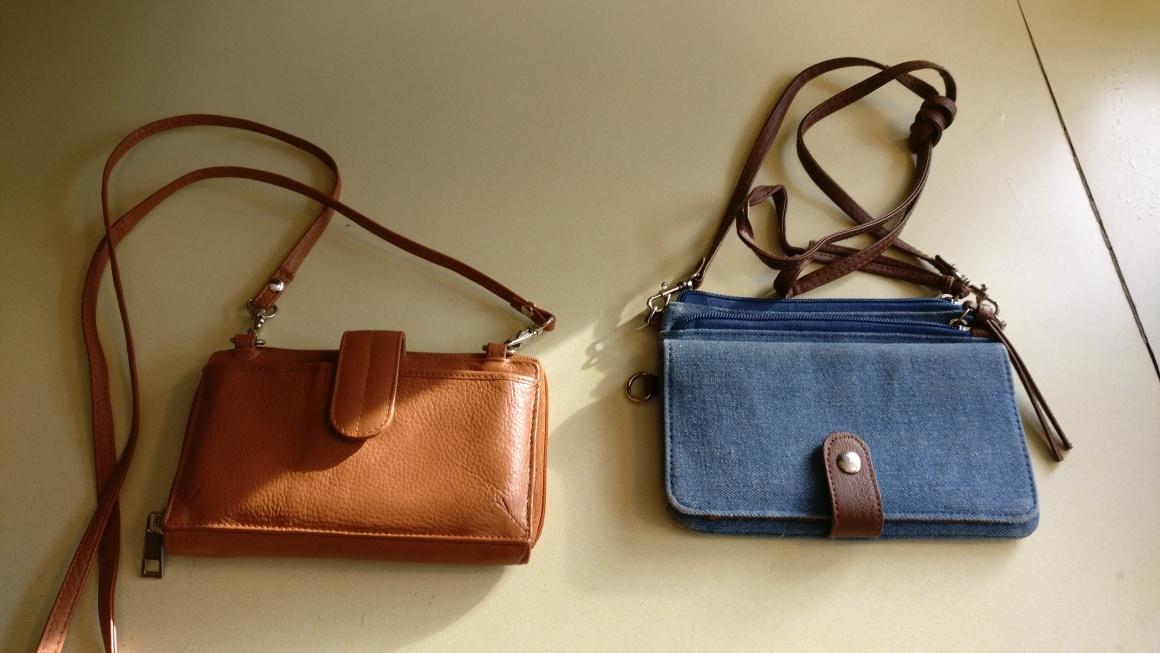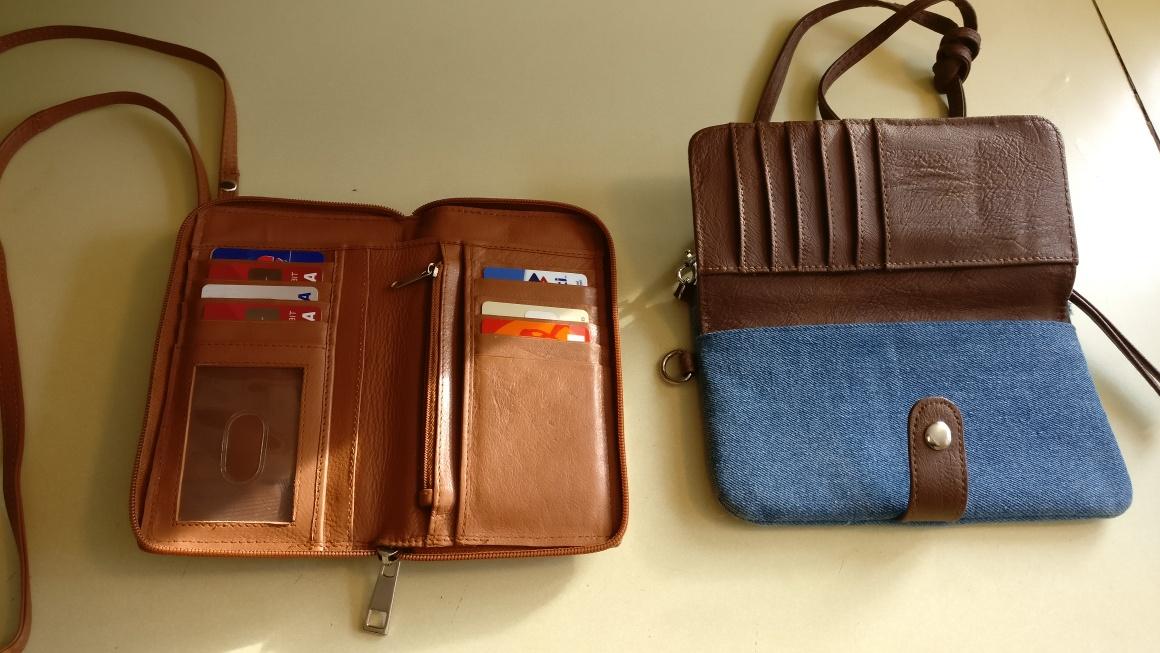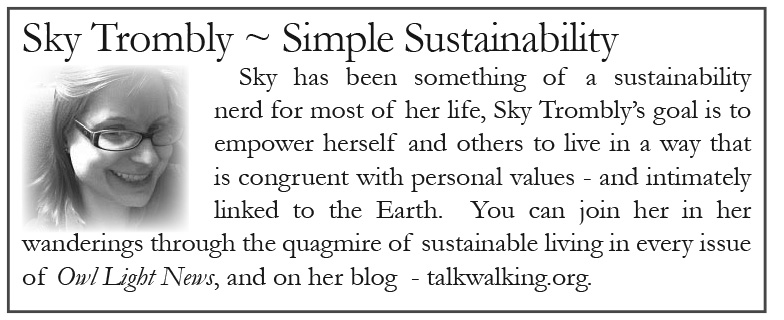Simple Sustainability: Middle Ground Purchases
by Sky Trombly –
Finding a place between waste and restriction
“Use it up, wear it out, make it do, or do without!”– War Advertising Council Slogan, March 1944
Aspiring minimalists often wonder for how long they should hang onto something and when they can replace it guilt free. The average American consumer, on the other hand, might be wondering why they shouldn’t replace it, especially when they can afford to do so.
The pithy environmentally-conscious answer is to make something last for as long as it still functions, but sometimes the answer should recognize a fuzzier reality. Sometimes an item is still functional but causes the owner enough distress to warrant a replacement.
Here, we will explore the middle ground on consumption in an effort to establish a saner purchasing philosophy.
As I see it, there are two ends of the spectrum. The replacement theory on one side and on the other, the theory American consumerism promulgates, the perfection theory.
Let’s explore these theories.
Replacement Theory:
Objects are meant to serve a purpose. If they are no longer able to do so, they ought to be replaced, preferably with an item the user deems to be an upgrade in some way. If the object is replaced, there is no temptation to hang onto the older version. It is, in a phrase, “functionally obsolete”.
This no-nonsense method does not include aesthetics or other preferences in the decision making. Proponents of this philosophy will likely make use of stop gap measures to keep an object functioning for as long as possible: shoe glue, tape, safety pins, etc.
Perfection Theory:
There is an idealized, perfect version of everything out there and your ability to own it is only hampered by the amount of money you have or can borrow. Furthermore, what you have reflects aspects of the perfect you. This theory is part of the package of the American dream, but the dream can turn into a nightmare, creating clutter, debt, wasted money, and dissatisfaction.
This theory leads to clutter because when a functional item gets replaced with something better it is often still too good to get rid of so the old item still remains in the home. It leads to debt and wasted money because constantly seeking out the best your money can afford means money is often spent rapidly and unnecessarily. Finally, this theory creates dissatisfaction because the vision of perfection is always out of reach.
The Middle Ground:
I prefer to work in between these two extremes. The reason is that I recognize other complaints against an object as having value. For example, an item might still function if you add a little tape, but tape on your glasses, for example, may diminish your vision or impact your social circle.
This said, consumption for the sake of consumption is irresponsible.
I employ three questions when considering a replacement purchase. Recently, I considered buying two things and I used these questions with different results. One was a new purse and one was a new set of earrings.
#1: Is this item necessary in my life? What do I use it for?
What do I like about it?
Why am I considering replacement?
These questions pin point the function of the object and the nature of the dissatisfaction.

In the case of the purse, the answer was an adamant “yes!” I used my old purse to carry my ID for driving, my credit cards and money, my cell phone. The strap on the purse was useful when I wasn’t wearing clothes with pockets. The small size was small enough that I could easily take it with me everywhere or even use it as a wallet in a larger purse or backpack.
I was considering a replacement because the wallet portion was not secure and my baby had pulled out and lost some of my cards while we were away from home.
I wanted something similar but with a closed section for the purse and maybe even RFID protection (protects against thieves stealing your cards’ information electronically through the wallet). In the past, I had cut the patches off the old purse to improve the aesthetics but securing the cards was not within my ability.
I also considered getting a new pair of earrings, but this was harder to justify: I had other pairs and earrings serve no practical purpose. I was considering a pair of gold earrings because gold studs would irritate my ears less and so I could wear them all day.
#2: Can the item be modified so that a replacement could be delayed?
This question asks if there is something one can do to keep an item in service for longer.
In the case of the purse, I had already modified the purse (by removing patches). I might have been able to employ rubber bands or paper clips to secure the cards but I would have been dissatisfied by the change to its appearance.
In the case of the earrings, studs are basically studs and the posts’ material was the problem so here, again, the answer was no. This can be applied to anything. In the past, I’ve used shoe glue to repair hiking boots and thus delayed purchasing a new pair.
#3: In what circumstance does a replacement make sense?
In the case of the purse, replacing it now makes sense. I would use it daily and the added security is important and relevant at the moment.
In the case of the earrings, if one or both is lost or broken than an upgrade would then make sense. Purchase of new earrings was deferred.
If I can afford it, why shouldn’t I buy it?
Truth be told, I would love to replace the earrings too. They are shinier, more classy, and would complement the image I want to project in the work force. If I could afford it, why shouldn’t I just buy them then?
When I asked the above questions, I determined that the purse was a need and the earrings a want. This is important because wants are basically endless and I could spend a lot of time and money and energy pursuing every whim, but it would take away from far more important things, such as my family’s uncluttered home space, financial security, my life’s goals and personal mission and so on.
Mostly, by delaying the gratification of wants, I am able to save my resources for my needs. Granting a wish never seems to feel as good as not being able to address a need feels bad.
Until next time, be the light – by living lightly!
